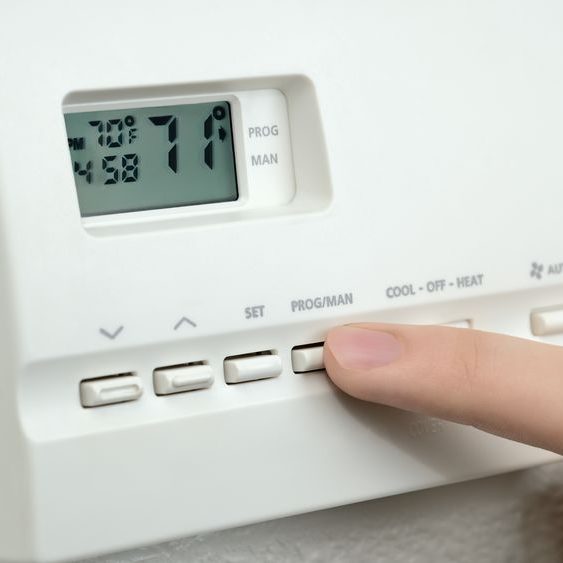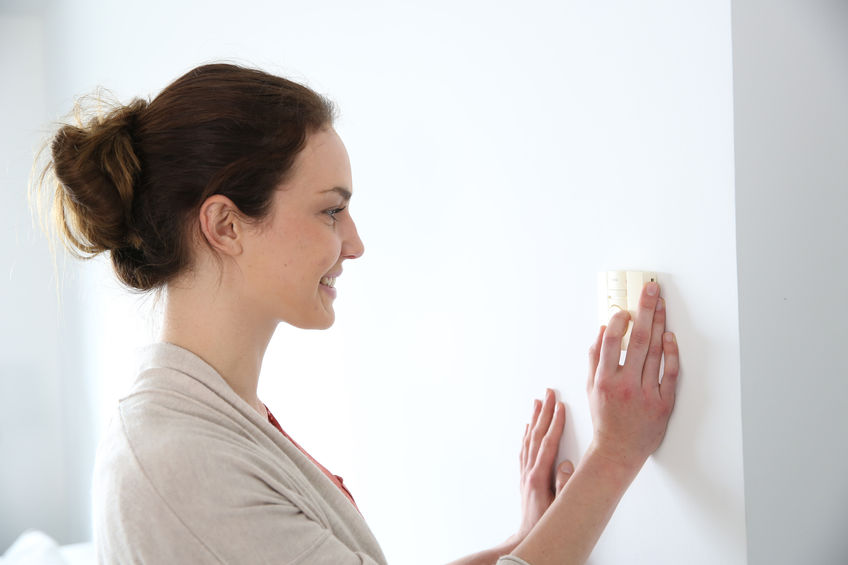
Control Your Comfort With Your Thermostat
An HVAC thermostat is a component used to set the cooling and heating in your home. This control device is “closed-loop” reduces errors between the desired temperature and measured temperature. It regulates the heat transfer fluid to turn the cooling or heating system off and on to maintain the correct/desired temperature.
This is a complicated way to describe what that little box on a wall in your home does. If that box is working correctly, all is well in your home. But when that little box, known as the thermostat for HVAC system in your home, isn’t working correctly or quits completely, it can get very cold on a winter night or very hot on a summer day.
This article will answer common questions about the HVAC thermostat while providing explanations to the answers and how the HVAC thermostat control is an important part of your home, and your comfort.
What are the symptoms of a bad home thermostat?
A broken thermostat will quickly lead to significant discomfort on a hot summer or a cold winter night. Here we have five symptoms that will tell you that you need the experience and knowledge of a licensed HVAC technician when your HVAC thermostat may be malfunctioning, or worse, it quits without warning. Eventually, all technology will quit sooner or later, and repair or replacement is the ultimate solution. By knowing and understanding the following warning signs, you can prepare yourself:
- The AC or Heater Refuses to Start –
- An HVAC thermostat can lose connection to your home’s HVAC system because of a wiring defect. This can cause it to read the temperatures incorrectly so that it isn’t turning the cooling or heating off as needed. In this case, an HVAC technician with experience and knowledge is your best solution so that you can get the cold or heat needed in your home quickly.
- The Air Conditioner Won’t Turn Off – If the air conditioning in your is constantly running, this can mean the HVAC thermostat is sending incorrect instructions to the HVAC system. This could there is a wiring issue within the device, or it needs to be re-calibrated.
- Replacing the Batteries Isn’t Helping – When an HVAC thermostat is acting odd, often replacing the batteries will fix it. However, if you have tried replacing the batteries to no avail, you’ll need to call your local HVAC repair service for further troubleshooting.
- The Temperature Isn’t Consistent Throughout Your Home – If the temperature varies substantially from room to room in your home, this can be an indication that the HVAC thermostat isn’t working properly. Temperature shifts happen when the thermostat is switching the HVAC system off and on incorrectly. When this happens, the rooms that are the furthest away from the central unit won’t get the proper distribution of the cooling or heating temperature.
- The Thermostat Doesn’t Have Power or Isn’t Responsive –
- When adjusting the HVAC temperature doesn’t change the temperature in your home, this is a telltale sign that the HVAC thermostat is malfunctioning. Another indication for a digital thermostat would be the display light isn’t on or there is an unresponsive interface.
Can low batteries affect thermostat?
Most programmable HVAC thermostat models have a display or flashing symbol to indicate low battery as the batteries start running low and will usually start one to two months before going completely dead.
For the batteries to do their job and maintain the setting of the HVAC thermostat settings during a power outage, there is a 24-volt wire that will provide power to the thermostat when there is not a battery backup. If your digital thermostat batteries are low, it can keep the cooling or heating from properly running.
How do I reset my thermostat?
On a hot summer day, if you turn up your air conditioner but you’re not getting cool air, it may be because the HVAC thermostat needs resetting. While thermostats are typically a durable and reliable device by design, that doesn’t mean they won’t break down. If you have suspicions that your air conditioning isn’t working properly, to avoid calling a technician, the following steps will reset the thermostat and may fix it:
- Shut Off the Thermostat: Turning the AC off at the HVAC thermostat is the first step to resetting the thermostat.
- Locate the Circuit Breaker Box And Reset The AC Breaker: The circuit breaker box is typically in the basement or a closet. Once you have located it, it should be labeled as to which circuit controls what. Look for the one marked AC and flip the circuit breaker to the off position.
- Wait Thirty Seconds and Flip Switch Back On: This 30-second wait is important – after 30 seconds has passed, flip the circuit breaker back to the on position. Now, turn the air conditioner thermostat on and see if the cool air comes on.
If you’re lucky, these steps can resolve any issues you’re having. Often it is a tripped breaker that is the cause of most problems. However, if this didn’t fix the problem and the air is still not cooling or coming on at all, it is time to call an authorized service technician.
How do I fix my thermostat?
It is common for a homeowner when the furnace or thermostat not working, to want to do anything they can to avoid calling a service technician. And while it can sometimes be easy enough for the homeowner to fix a thermostat, it is important to understand that if you do not have a basic and clear understanding of the HVAC thermostat and the HVAC system, you can do more damage, thus costing you more money.
A wall-mounted HVAC thermostat is wired to the 120-volt circuit in your home. There is a transformer in place, and dependent on what furnace is installed, it will reduce the voltage of the thermostat between 12 and 24 volts. Here are three of the most common problems of an HVAC thermostat that a homeowner may be able to repair themselves:
- There isn’t any heat coming: from the furnace: This could be a tripped breaker, a loose connection, or the battery in your HVAC thermostat needs to be replaced.
- The heat isn’t warming up to the programmed temperature: This is sometimes caused because the HVAC thermostat was installed crooked. For proper working order, the thermostat must be level.
- The furnace is cycling on and off rapidly: This can be there is a loose connection to the HVAC thermostat, or it is dirty.
While these three common problems can sometimes be repaired easily by the homeowner, but if the existing HVAC thermostat is old, replacing it with a new digital unit would be recommended. The newer digital models keep the temperature level and more comfortable and will help reduce your utilities.

Can you replace your own thermostat?
Typically, HVAC thermostats are purchased from the HVAC technician that installs it, but it can be done by the homeowner. Before you buy one, look at the existing wiring and verify if it is a two-wire setup, which is the simplest to replace. An upgraded thermostat will make changing the indoor temperature easy and can reduce your energy cost.
If you have an HVAC thermostat with humidity control, the ideal relative humidity is 50 percent for a home’s indoor environment. Anything above 60 percent can cause mold growth inside the air ducts. Mold growth can lead to allergies and respiratory problems. You can minimize this from happening with the following steps:
- The ideal setting for the HVAC thermostat during the summer months is 78 to 80 degrees
- Set the HVAC thermostat on auto
- Purchase an inexpensive hygrometer
- Use the built-in humidity control on the thermostat if it has one
When the HVAC thermostat is left in the “on” position constantly, it strains the cooling unit because the coils can’t reach their dew point, thus they can’t dehumidify the air. The HVAC thermostat is essential in controlling the humidity in your home. For your new thermostat in Severn and Baltimore, MD, dial (410) 921-1277 for Rocky HVAC!

